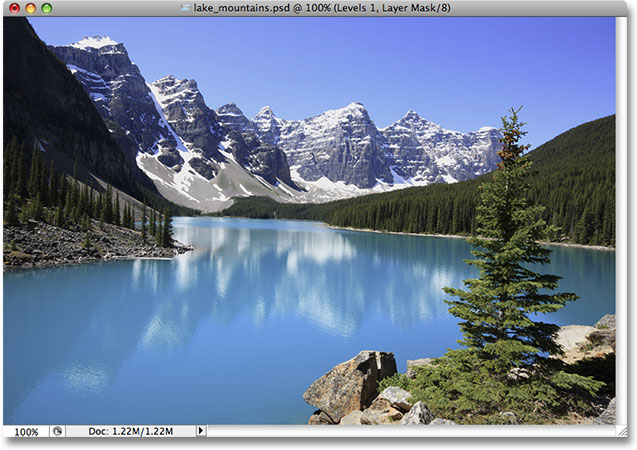Mastering Image Tone: A Comprehensive Guide to Improving Image Tone with Levels in Photoshop

Introduction:
In the realm of digital image editing, achieving optimal tonal balance is a fundamental step toward creating visually captivating and well-exposed photographs. Adobe Photoshop, a powerhouse in the creative toolkit, provides a versatile tool known as Levels, allowing photographers and designers to precisely adjust the distribution of tonal values in an image. This comprehensive guide explores the intricacies of improving image tone with Levels in Photoshop, delving into its features, applications, and offering step-by-step tutorials to empower users in their pursuit of mastering this indispensable tool.
Section 1: Understanding the Role of Image Tone
- Importance of Image Tone: Image tone refers to the overall brightness and contrast in a photograph. Achieving the right tone is essential for conveying the mood, emphasizing details, and ensuring a visually appealing composition.
- Challenges in Tone Correction: Various factors, such as lighting conditions during photography or exposure settings, can lead to challenges in achieving optimal image tone. Recognizing these challenges is crucial for effective correction during the editing process.
Section 2: Accessing the Levels Adjustment in Photoshop
- Introduction to Levels: The Levels adjustment in Photoshop is a powerful tool for adjusting the tonal range of an image. It allows users to control the brightness and contrast by manipulating the input and output levels of shadows, midtones, and highlights.
- Accessing the Levels Dialog: Open the Levels dialog in Photoshop by navigating to Image > Adjustments > Levels or by using the keyboard shortcut Ctrl + L (Windows) or Command + L (Mac). This action reveals a set of sliders and options for fine-tuning the image tone.
Section 3: Basics of Using Levels for Tone Improvement
- Setting Black and White Points: Learn the foundational step of setting black and white points using the Levels adjustment. This establishes the image’s dynamic range, ensuring that shadows and highlights are well-defined.
- Adjusting Midtones for Balance: Explore the adjustment of midtones to achieve a balanced tonal distribution. Fine-tune the midtone slider to enhance or reduce contrast, bringing out details in the image.
Section 4: Real-World Applications and Techniques
- Portrait Photography: Apply Levels adjustments to enhance image tone in portrait photography. Achieve balanced skin tones, emphasize facial details, and create visually appealing portraits.
- Landscape Photography: Elevate landscape images by using Levels adjustments to control the tonal values of skies, foreground elements, and intricate details. Achieve a harmonious balance that brings out the beauty of natural landscapes.
- Product Photography: Optimize product images by adjusting image tone with Levels. This technique is particularly useful for showcasing textures and features of products with clarity and visual appeal.
Section 5: Advanced Techniques and Tips
- Channel-Specific Adjustments: Delve into advanced capabilities of Levels by making channel-specific adjustments. Fine-tune individual color channels to correct color casts or create unique stylized effects.
- Selective Adjustments with Masks: Harness the power of selective adjustments by combining Levels with layer masks. This technique allows for precise adjustments to specific areas of the image, enhancing control over the overall tone.
- Blend If for Seamless Integration: Combine the use of Blend If sliders with Levels adjustments for seamless integration of elements. Achieve natural blending of multiple layers with precision, maintaining a consistent tone throughout.
Section 6: Workflow Efficiency and Best Practices
- Non-Destructive Editing with Adjustment Layers: Prioritize non-destructive editing practices by using Levels as Adjustment Layers. This ensures flexibility in making iterative changes while preserving the original image.
- Organizing Layers and Adjustments: Maintain an organized workspace by naming and grouping layers. This practice streamlines the editing process, providing a clear overview of adjustments and facilitating collaborative work.
- Saving and Exporting with Adjustments: Understand best practices for saving and exporting images with Levels adjustments. Ensure that your edits are preserved, and the final image meets your intended specifications.
Section 7: Undo and History States with Levels Adjustments
- Reverting Changes: Familiarize yourself with the Undo (Ctrl + Z or Command + Z) and Step Backward (Alt + Ctrl + Z or Option + Command + Z) commands. These tools are crucial for reverting changes or navigating through your editing history.
- History Panel: Utilize the History panel to review and jump back to specific points in your editing process involving Levels adjustments. This offers a comprehensive overview of your workflow and helps troubleshoot any undesired changes.
Conclusion:
In conclusion, mastering image tone with Levels in Photoshop is a transformative skill that empowers photographers and designers to enhance the visual impact of their work. This comprehensive guide has navigated through the basics, real-world applications, advanced techniques, workflow efficiency tips, and best practices. Whether you’re a novice seeking to improve image tone in portraits or a seasoned professional optimizing landscapes, mastering the techniques explored empowers you to achieve unparalleled control over the tonality of your images. Embark on this journey of tone improvement, experiment with the multitude of possibilities offered by Levels, and witness your images undergo a transformation that brings out the richness and depth, creating visually stunning and captivating compositions.




